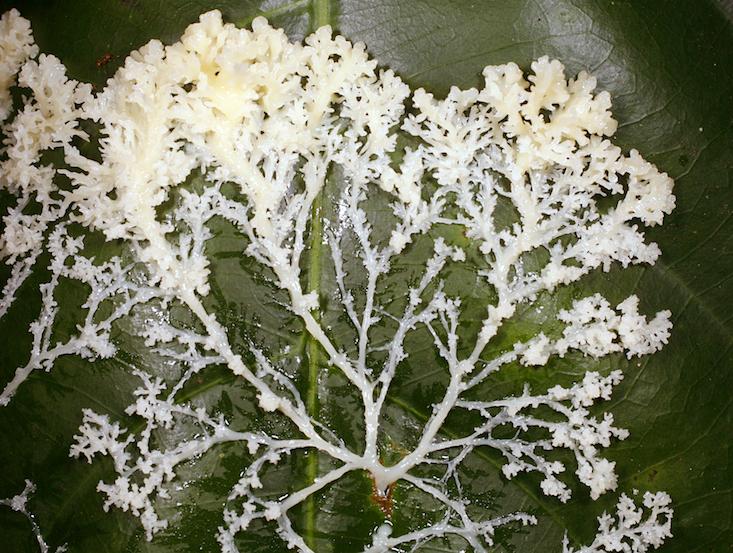You don’t need a brain to learn. Slime molds, for example, solve mazes and navigate obstacles—all without a single neuron. Information about their environment is somehow stored across their bodies. (Scientists are still a bit hazy on how this works.)
But what about something that isn’t even alive? A new paper suggests that samarium nickelate oxide (SNO, for short), a synthetic crystal, can mimic learning.
SNO’s ability comes from its environmental sensitivity. When it makes contact with hydrogen gas, it steals electrons from the hydrogen and its electric resistivity increases. “It basically changes the electrical resistance of the material by many orders of magnitude—and this happens even at room temperature,” said Shriram Ramanathan, a professor of material science at Purdue University and co-author on the study. “It’s a really remarkable effect.”

Successive exposure, however, produces diminishing returns—SNO becomes “habituated” to the hydrogen and its resistivity increases more slowly. “You might take that behavior for granted,” Ramanathan said. “[But] habituation is considered to be a very fundamental survival skill for organisms.” For example, dogs can become habituated to loud car engines. At first, they might be threatening, so the dogs expend energy barking. But after long enough, they generally stop. (This way, the dogs conserve energy and attention for real threats, like mailmen.)
Of course, there’s more to learning than just habituation. There’s also forgetting—when you have limited space for memory, it’s vital to be able to make room for new memories, and SNO can do that, too: After a period of time without exposure to hydrogen, SNO’s electric resistance decreases. Essentially, it gradually “forgets” the effects of its exposure to hydrogen.
Doing it gradually—as opposed to catastrophically, where information is uncontrollably lost—is key. Ramanathan said he believes the ability to gradually forget has “broad implications.” “You learn new information until the day you die,” he said. “Why is that? One mechanism that can possibly enable that is that you forget information that’s not important.”
SNO may be the first synthetic material to both habituate and gradually forget—organism-like properties strange to witness in a lifeless, synthetic crystal. So the researchers coined the term “organismoid” to describe it. But are those properties enough for learning? The researchers outfitted an artificial neural network with those properties as a test.
They fed it two sets of rules, or algorithms. One algorithm, known as spike-timing dependent plasticity (STDP), wasn’t designed to gradually forget information. When the researchers showed it three digits—0, 1, and then 2—the neural network remembered well, too well.
Unable to forget 0 when shown another digit, the STDP algorithm muddled 0 and 1, and then, shown the next digit, muddled all three.

But the second algorithm, called adaptive synaptic plasticity (ASP), used SNO’s ability to remember and gradually forget information and was able to represent each successive digit with little trouble. ASP’s success was the result of balancing habituating and forgetting.
Initially, ASP remembered the first digit, 0—although not as strongly as STDP did. But when it was shown a second digit, ASP was able to forget some of the 0s to make room for 1s. Instead of mashing the digits together, ASP both retained old digits and represented new ones.

But even if it can forget and habituate, is SNO really “learning”? Whatever it is, it’s a far cry from slime molds learning to recognize a variety of different substances as harmless, a much more complex task. But, if we take learning to be simply “a change in behaviour evoked by experience,” as slime mold researchers have defined it, then SNO does learn.
Herbert Simon, a polymath known for his expertise in artificial intelligence, once wrote: “Human beings, viewed as behaving systems, are quite simple. The apparent complexity of our behavior over time is largely a reflection of the complexity of the environment in which we find ourselves.”
It might be discomfiting that SNO—without a brain or even living cells—can learn. How special are we if a couple layers of atoms can learn, too? But then again, just because humans don’t have a monopoly on learning doesn’t mean we’re not unique. We did discover SNO.
Dan Garisto is a former editorial intern at Nautilus.


























